Five compelling reasons to visit Vietnam in October
Tue, 22 Oct 2019 14:31:00 | Print | Email Share:
October is here and many of Vietnam’s most popular tourism destinations are at their absolute best.
Autumn spirit in Hanoi
Fall in October is considered the most romantic and joyous time of the year in Hanoi. It casts a spell on everything – the air, the space, the food, the drinks, the fruits.
In the evening and night the famous hoa sua or milk flower, an autumn symbol in Hanoi, gives off its soothing fragrance. It comes as no surprise to see the flower blooming along sections of the West Lake on streets like Phan Dinh Phung, Quan Thanh and Quang Trung.
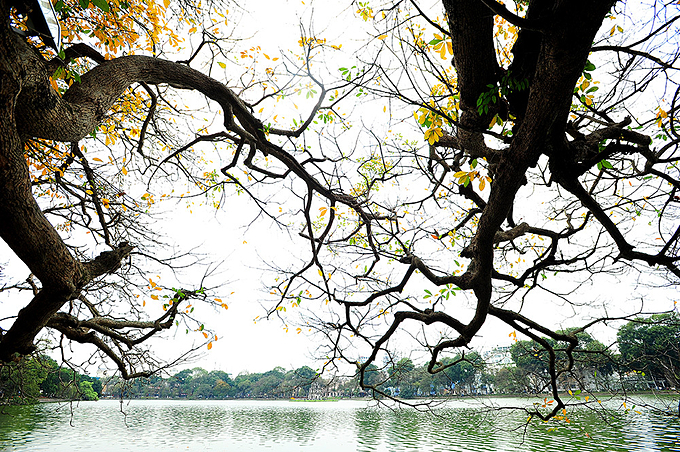
Come autumn, Hoan Kiem (Sword) Lake is covered by yellow leaves.
Photo by VnExpress/Nguyen Chi.
Visitors can also explore the maze of alleys that make up the city's Old Quarter to find autumn specialties like green rice flakes (com) and ragworm fritters, or sit by an open-air café in the cool wind and enjoy a cup of Vietnamese egg coffee.
Autumn is also the season when white and yellow daisies are carried by vendors on bicycles and sold on sidewalks.
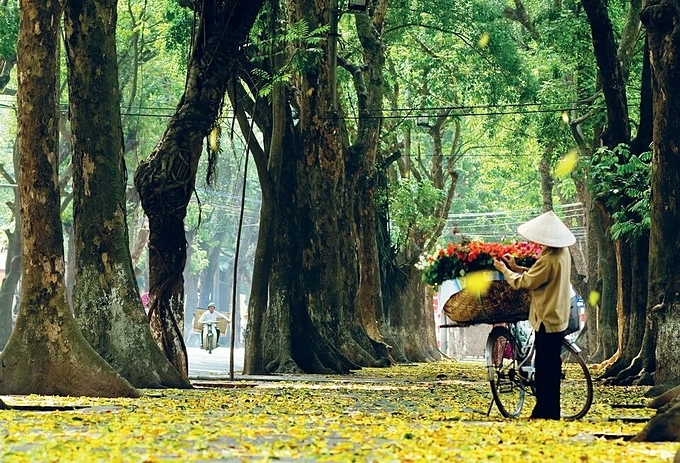
The sight of a woman holding bouquets of daisies on a breezy autumn
day adds to the beauty of the capital. Photo by Shutterstock/Minh Duy.
Hoan Kiem Lake (Sword Lake) and West Lake are idyllic and lovely to behold.
It is a wonderful experience to cycle or ride a motorbike slowly through the streets of Hanoi at this time of the year, watching fallen and falling leaves and feeling the soft breeze and gentle warmth of the sun.
Rice terrace tour in northern highlands
Mu Cang Chai, a rural district in Yen Bai Province around seven hours by road to the northwest of Hanoi, is at the foot of the Hoang Lien Son mountain range. The H’Mong ethnic people started carving rice terraces into the mountains centuries ago and continue to use them today.
The poor and relatively underdeveloped district has become a popular destination, especially in October when the rice harvest starts.
You can check out the terraced fields in Yen Bai's valleys like Tu Le, La Pan Tan and Khau Pha, one of the four imposing mountain passes in the northwest.
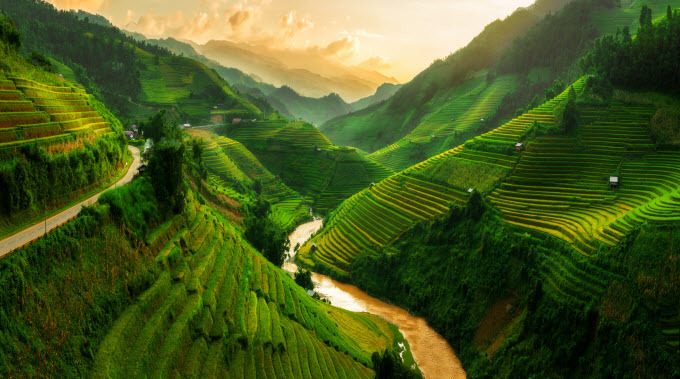
Mu Cang Chai in Yen Bai Province is famous for its iconic terraced rice fields which
turn golden yellow during harvest season. Photo by Shutterstock/Hoang Nguyen.
Y Ty is a commune in Lao Cai Province which neighbors Yen Bai and around 400 kilometers from Hanoi. When autumn arrives, Y Ty is adorned with golden terraced rice fields and smells of grass. It remains relatively unknown despite its wonderful landscapes.
To see terraces, you can visit A Lu and Den Thang rice fields. To catch a view of the clouds, you can try trekking on the Nhi Cu San mountain range. Other attractions include the intersection of the Lung Po Stream and the Red River Valley, and the Den Sang cardamom forest.
The terraced fields in Hoang Su Phi District of Ha Giang Province are now a golden yellow with flecks of green. For many travelers, Hoang Su Phi is often the final stop on "rice tours" through the northern mountains during harvest.
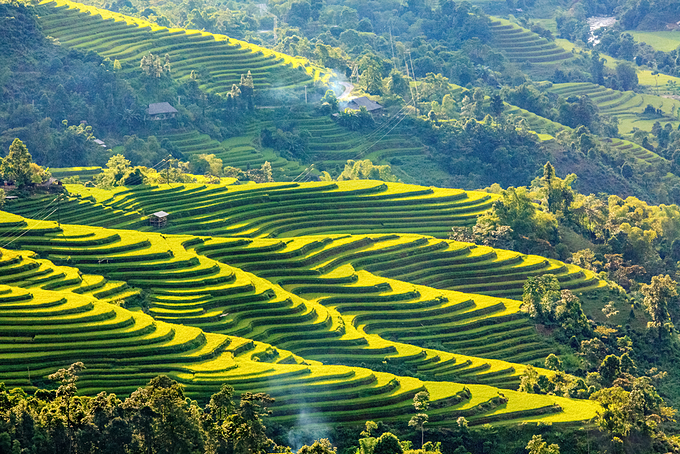
Many tourists see Hoang Su Phi terraced fields as a good end to the "rice tour"
of Vietnam's northern mountains. Photo by Shutterstock/Anh Duy.
Buckwheat flower season in Ha Giang
Situated around 300 kilometers (186 miles) from Hanoi, the mountainous province of Ha Giang, a neighbor of Sa Pa town, has yet to be overrun by holiday crowds though it has been pulling in many visitors in recent years thanks to its scenic landscapes.
Ha Giang is home to ethnic minorities like the H’Mong and Thai, and visitors can witness some exotic local lifestyles.
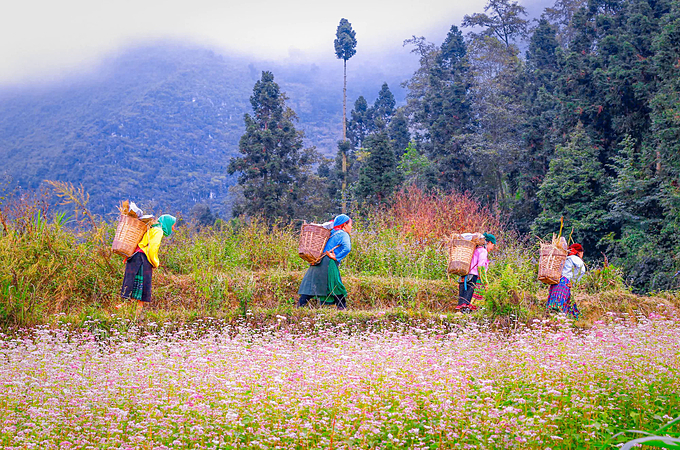
H'Mong women in Pho La Commune, Ha Giang Province walk home.
Photo by VnExpress/Tung Duong.
In October and November every year vast fields of tam giac mach (buckwheat) flowers bloom in white and pastel pink all over the Dong Van karst plateau, luring vacationers on motorbikes coming through mountain passes to behold the magnificent sight.
Buckwheat is among the staple grains of the locals and usually cultivated after the summer-fall rice crop every year. Now buckwheat flowers are in full bloom all over mountain slopes in Dong Van District.
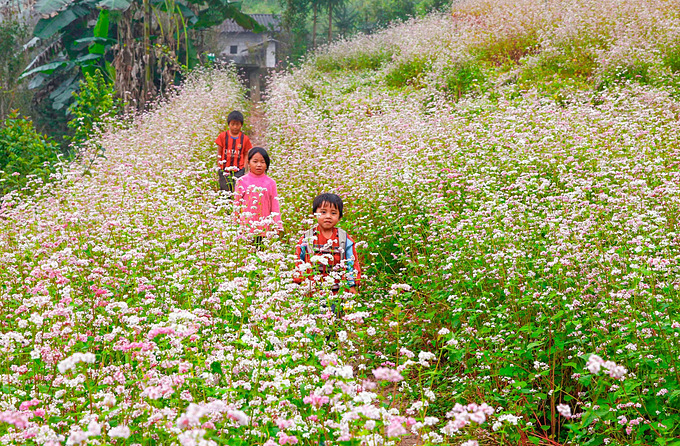
Children from ethnic minority groups play on vast fields of buckwheat flowers.
Photo by VnExpress/Tung Duong.
A month after their sowing in September the buckwheat plants blossom and remain in for a month before being harvested.
Flooding season in Mekong Delta
Thanks to its vast network of waterways, orchards and seafood, the Mekong Delta piques foreign tourists’ interest throughout the year, but it really comes into its own during the flooding season which peaks in October.
The Mekong River Commission (MRC) said the much anticipated annual flooding season began in the middle of this month, much later than usual due mostly to a series of upstream dams built in the Mekong River which runs through China, Myanmar, Laos, Thailand, Cambodia and Vietnam.
Located along the upper branches of the Mekong River, An Giang Province, which is home to the Ba Chua Xu Lady Temple, one of the most famous spiritual sites in southern Vietnam, is one of the most visited destinations during the annual floods.
Tourists visiting An Giang have a chance to travel by boat instead of cars and scooters, capture stunning images of sunrises and sunsets, and see locals cast their nets to cash in on the bounty borne by the river.
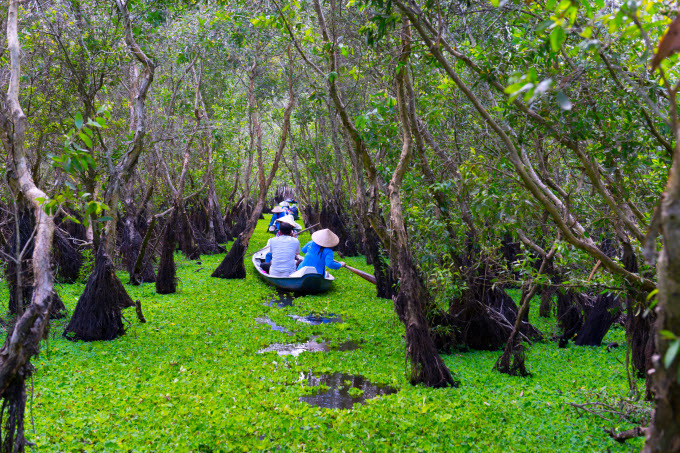
Tourists take a boat tour of Tra Su cajuput forest in Tinh Bien District, An Giang Province.
Photo by Shutterstock/An Nguyen.
It is best to take a boat ride through the Tra Su cajuput forest along canals covered with green water-ferns in Tinh Bien District, around 26 kilometers (16 miles) from Chau Doc, the capital of An Giang.
The Mekong Delta is a place where floods are awaited eagerly, because they deposit large amounts of rich silt that gives the region a fertility to be envied. The flooding is seen as a gift from heaven that brings tons of fish into the paddy fields along with alluvial deposits to fertilize the next crop.
Boat rides through mangroves, cajuput forests, floating markets and fruit orchards are the way to go in the delta
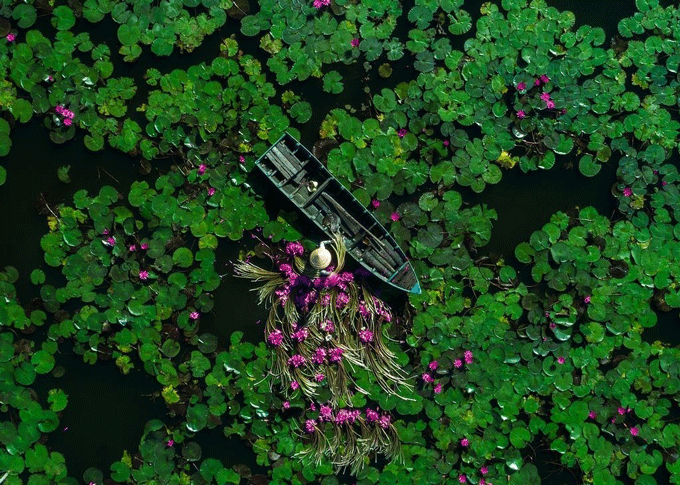
Water lilies, which blossom during the flooding season, are used
for decoration and to make tea. Photo by Pham Huy Trung.
Wild flower season in Da Lat
Come October, visitors can see blooming wild sunflowers in many parts of the Central Highlands resort town of Da Lat.
Along the way from Bao Loc mountain pass to Da Lat and in some countryside roads like Lien Khuong, Trai Mat-Cau Dat, D’ran – Da Lat and along Chu Dang Ya Commune in Gia Lai Province, where traces of a century-old, extinct volcano can still be found, travelers can see immense mountains covered in wild sunflowers mingling with the green of pine trees.
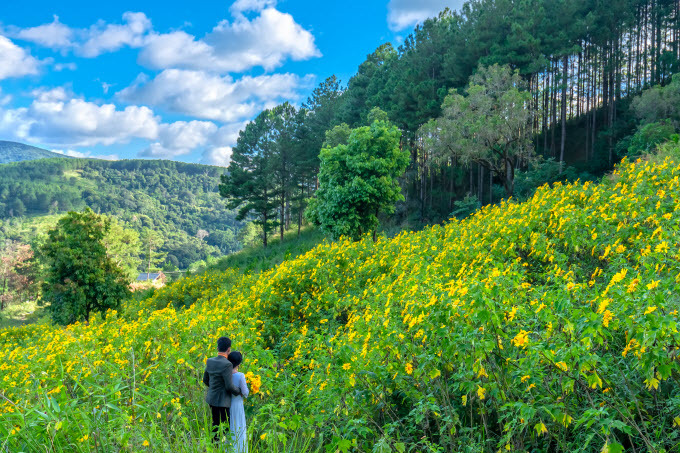
A couple pose for a photo on a hillside covered with wild flowers
in Da Lat in the Central Highlands. Photo by Shutterstock/Anh Tuan.
Given various epithets like ‘Little Paris, the city of eternal spring, the city of flowers, and the city of love’, Da Lat has gained popularity both as a romantic place for honeymoon couples and a cool refuge in a country where one usually sweats all year round.
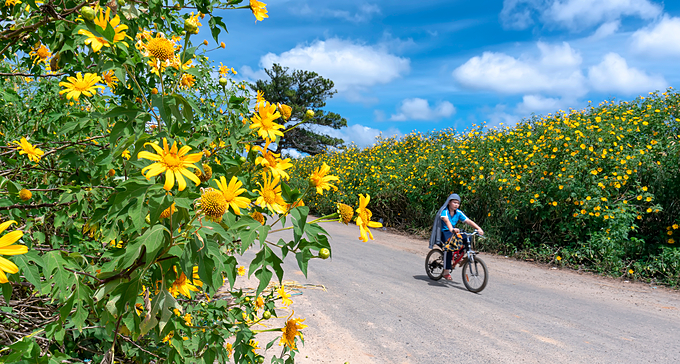
A boy rides through a road dyed with yellow wild flowers. Photo by Minh Phong.
By: Hoang Phong/VnExpress
---------------------------------------------
Same category News :













